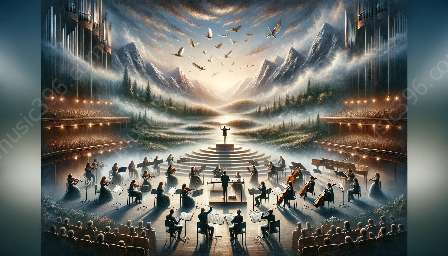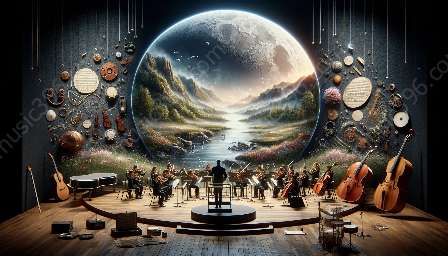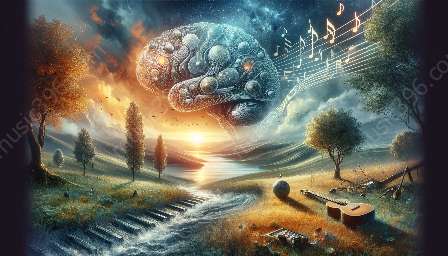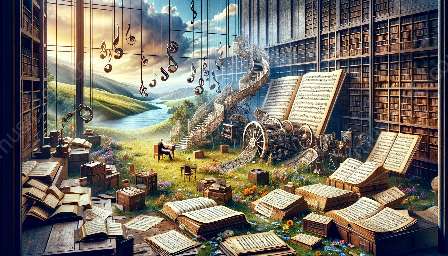Music iconography is a rich field that encompasses various symbols and motifs that hold significant meaning in the world of music. In this comprehensive guide, we'll explore the diverse range of symbols and motifs used in music iconography, shedding light on their meanings and cultural significance.
1. The Treble Clef
The treble clef is one of the most recognizable symbols in music iconography. Also known as the G clef, it is placed on the second line of the staff, indicating that this line is G on the musical staff. The treble clef symbolizes higher-pitched instruments and voices, such as the violin, flute, and soprano voices.
2. The Bass Clef
Opposite the treble clef is the bass clef, also known as the F clef. This symbol is placed on the fourth line of the staff, indicating that this line is F on the musical staff. The bass clef represents lower-pitched instruments and voices, including the cello, bass guitar, and bass voices.
3. The Eighth Note
The eighth note, also called the quaver, is a symbol frequently found in music iconography. It represents a note that is half the duration of a quarter note and is commonly used to convey rhythmic patterns in music.
4. The Sorcerer's Apprentice
The Sorcerer's Apprentice is a motif often used in music iconography, inspired by the famous symphonic poem composed by Paul Dukas. The motif typically depicts a bespectacled apprentice surrounded by brooms and water, reflecting themes of magic and mischief in musical contexts.
5. The Musical Staff
The musical staff itself is a fundamental motif in music iconography, serving as the foundation for musical notation and representation. Its five lines and four spaces provide a visual framework for notating pitch and rhythm in musical compositions.
6. The Harp
The harp is a recurring symbol in music iconography, often associated with heavenly or ethereal themes. It is also a prominent motif in the iconography of angels and celestial beings, symbolizing harmony and peace.
7. The Lyre
In ancient Greek mythology, the lyre was associated with the god Apollo and symbolized music, poetry, and the arts. As a result, the lyre has become a powerful motif in music iconography, representing creativity, inspiration, and the divine nature of music.
8. The Trumpet
The trumpet is a symbol often used in music iconography to evoke themes of triumph, power, and celebration. Its bold and majestic appearance makes it a popular motif for denoting grandeur and fanfare in musical imagery.
9. The Metronome
The metronome, a device used to mark time in music, is a symbolic motif often representing precision, rhythm, and discipline in musical performance and composition. Its presence in music iconography underscores the importance of timing and tempo in the musical arts.
10. The Ouroboros
The Ouroboros, an ancient symbol depicting a serpent or dragon eating its own tail, has found its way into music iconography, often conveying the cyclical and eternal nature of music. The Ouroboros symbolizes the continuous cycle of creation, destruction, and rebirth in musical expression.
11. The Crossroads
The crossroads is a powerful motif in music iconography, often associated with themes of choice, destiny, and transformation. In musical lore and legend, the crossroads represent pivotal moments and decisions that shape the artistic and personal journey of musicians.
12. The Masks
Masks have been used as symbols in music iconography to represent the duality and theatricality of musical performance. From the ancient Greek theater to modern-day masquerade imagery, masks evoke themes of transformation, disguise, and the enigmatic nature of artistic expression.
13. The Phoenix
The phoenix, a mythical bird associated with rebirth and renewal, has been adopted as a potent symbol in music iconography. Often depicted in flames, the phoenix represents the enduring spirit and transformative power of music through its cycles of creation and reinvention.
14. The Triquetra
The triquetra, a Celtic knot symbol with three interconnected loops, has been integrated into music iconography, symbolizing unity, balance, and the interplay of musical elements. Its geometric elegance serves as a visual representation of the interconnected components of music.
15. The Mandala
In some musical traditions, the mandala has emerged as a symbol in music iconography, reflecting the cosmic and spiritual dimensions of music. The intricate patterns and symbolism within mandalas convey the harmonious and transcendent nature of musical experience.
Conclusion
From the treble clef to the phoenix, music iconography is replete with symbols and motifs that enrich our understanding and appreciation of the art of music. Exploring these symbols and motifs not only unveils the cultural significance and timeless themes embedded in musical expression but also invites us to contemplate the deeper meanings and universal truths that resonate across diverse musical traditions.








































